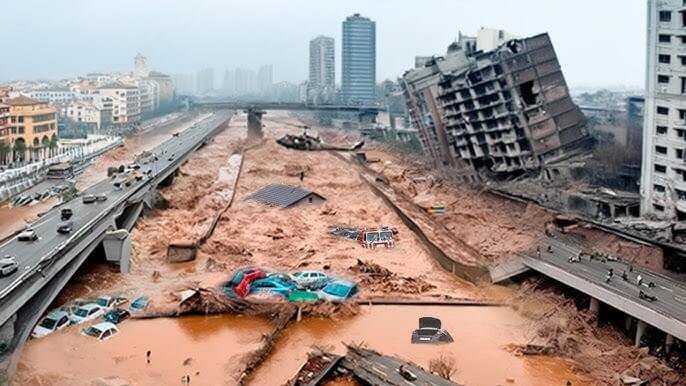Authorities in the eastern and southern parts of Spain have issued new alerts and started taking action due to the continuous torrential rains. Two weeks ago, floods in Spain killed at least 215 people, prompting evacuations and the closure of schools.
Aemet, the official meteorological office, increased the alert level for several provinces on Wednesday, including Málaga in Andalucía, due to the prediction of dangerous weather. The Andalucían government took immediate action by closing schools in Málaga and Granada. Thousands of residents living near the Guadalhorce River were evacuated, and high-speed rail services between Málaga and Madrid were stopped. Meanwhile, Aemet raised Valencia’s alert to red, signaling extreme danger due to the flooding of rivers.
The region expects intense rainfall, potentially up to 180 liters per square meter over an hour. While the storm isn’t likely to be as strong as the previous one, the risk is significant. Already saturated ground and a weakened sewage system threaten further damage. Valencia, the region which was hit the hardest by the floods in October, still has over 20,000 military personnel and police officers working on the clean-up. Chiva is one of the worst-hit towns. Local workers have placed sandbags to prevent flooding from the Saleta ravine.
Rescue teams are still looking for 23 people who have gone missing, including two brothers who were later discovered dead in the Valencian town of Torrent. Protests have broken out in Valencian due to the floods; Carlos Mazón, the regional president, is being criticized for his delay in responding to the tragedy, and protesters have called for his resignation.
Locals are also criticizing Teresa Ribera, Spain’s environment minister, for her way of handling the disaster. As communities attempt to recover from the damages caused by the floods in Spain, the blame game continues.









